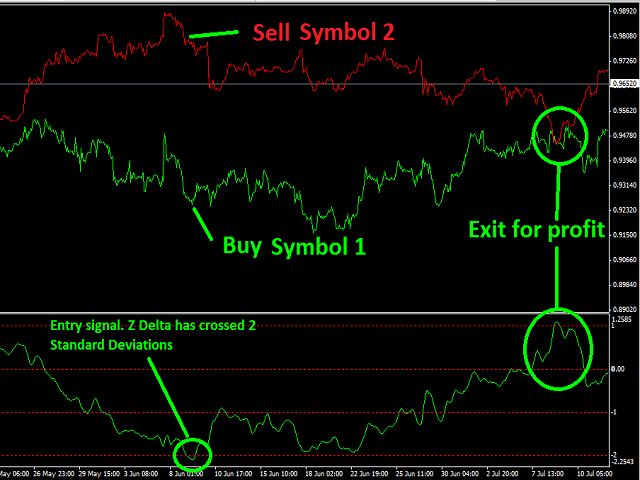Arbitrage in forex trading involves taking advantage of price discrepancies of currency pairs in different markets or at different brokers to make a profit. It’s a technique used by traders to exploit temporary inefficiencies in the pricing of currencies. However, due to advancements in technology and market efficiency, arbitrage opportunities in the forex market have become increasingly rare. Nevertheless, understanding the concept and types of arbitrage can provide insights into the dynamics of forex trading.

Understanding Forex Arbitrage:
- Concept of Arbitrage:
- Arbitrage is the practice of simultaneously buying and selling an asset (in this case, currency pairs) in different markets or forms to profit from price discrepancies.
- Efficiency of Forex Markets:
- The forex market is highly liquid and efficient, making it challenging to find substantial price differences across different platforms or brokers.
Types of Forex Arbitrage:
- Triangular Arbitrage:
- Involves exploiting price discrepancies between three currency pairs. For example, if EUR/USD, USD/JPY, and EUR/JPY rates don’t align properly, a trader can execute trades to profit from the imbalance.
- Statistical Arbitrage:
- Uses quantitative models to identify temporary mispricing based on statistical analysis. Algorithms analyze historical relationships between currency pairs to spot deviations that might correct over time.
- Latency Arbitrage:
- Takes advantage of the time lag in price quotes across different brokers. High-frequency traders use advanced technology to execute trades faster, profiting from the milliseconds of price differences.
- Arbitrage with Cross-Currency Swaps:
- Utilizes the difference in interest rates between two currencies. By borrowing one currency and investing in another with a higher interest rate, traders aim to profit from the interest rate differential.
Challenges and Risks in Forex Arbitrage:
- Market Efficiency:
- Forex markets are highly efficient, and price discrepancies usually get corrected swiftly, leaving little room for arbitrage opportunities.
- Execution Speed:
- High-frequency trading and advanced technology are necessary to exploit the minuscule price differences in the milliseconds they exist.
- Liquidity and Costs:
- Some arbitrage opportunities may seem profitable, but when factoring in transaction costs, spreads, and slippage, the actual profit might be negligible or negative.
- Regulatory Issues:
- Different jurisdictions might have regulations that hinder or prevent certain arbitrage strategies, adding complexities and legal risks.
Strategies for Forex Arbitrage:
- Technology and Connectivity:
- Advanced trading platforms and low-latency connections are crucial to execute trades quickly and efficiently.
- Automated Trading Systems:
- Algorithms and trading robots can monitor multiple markets simultaneously, seeking out potential arbitrage opportunities and executing trades swiftly.
- Risk Management:
- Given the fleeting nature of arbitrage opportunities, efficient risk management, including setting stop-loss orders, is vital to prevent significant losses.
- Constant Monitoring:
- Monitoring multiple markets and currency pairs in real-time to spot any price discrepancies before they disappear is essential.
Conclusion:
Forex arbitrage, while theoretically profitable, has become increasingly challenging due to the efficiency and technological advancements in the forex market. Traders seeking arbitrage opportunities need advanced technology, fast execution, and a deep understanding of market dynamics to capitalize on fleeting price differences. Moreover, it’s essential to acknowledge the risks, including execution speed, regulatory issues, transaction costs, and the rapid correction of price discrepancies, which can erode potential profits. In today’s forex landscape, while arbitrage might offer occasional opportunities, successful execution requires sophisticated tools, rapid decision-making, and effective risk management strategies.
